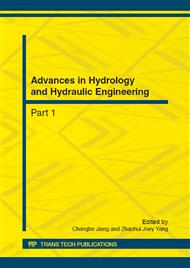p.1141
p.1147
p.1151
p.1155
p.1161
p.1168
p.1172
p.1177
p.1182
Specification of Turbulent Diffusion by Random Walk Method for Oil Dispersion Modeling
Abstract:
Random walk modeling has been extensively used for oil dispersion studies. However, there is some misusing about the expression. The aim of this study is to clarify the essence of the method. Expressions used in published papers are reviewed firstly, and different methods are discussed. The results show that the random method can successfully predict the dye patch dimensions and the dilution of the dye with time in contrast with the other method. Also, some critical factor in applying the random walk method is emphasized in the paper. Two types of formula used to simulate the turbulent diffusion are discussed. Results have shown a need for care in determining the concentrations from the random walk model.
Info:
Periodical:
Pages:
1161-1167
Citation:
Online since:
October 2012
Authors:
Keywords:
Price:
Сopyright:
© 2012 Trans Tech Publications Ltd. All Rights Reserved
Share:
Citation:


